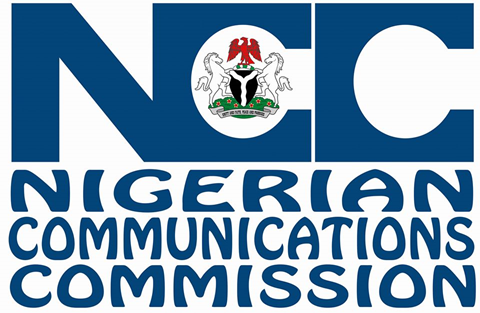CAREER
Diversity is the linchpin of innovative and competitive working environments.
The view that diversity is a resource that can improve performance is spreading throughout organisations. Research shows that for complex tasks that require creativity, diverse teams do better than those comprised of similar individuals – as long as the team members have the skills to collaborate. Diversity of views, experiences, expertise, culture and race can all enhance the way organisations and countries work.
This view is also spreading into the realms of policy. Education reform underway across the world is focused on tapping into differences rather than suppressing or ignoring them, as it has become clear that individual diversity and collaboration must be inculcated from the early stages of education. There is a growing realisation that diversity can be a national resource for competitiveness.
It is cognitive diversity (diversity of knowledge, experience and perspectives) above all else that leads to higher performance and creative innovation on problem-solving and predictive tasks. This is more important than ever in an era of automation. Crucially though, diversity must walk hand in hand with inclusion. Diversity consultant Vernā Myers described it as: “Diversity is being invited to the party; inclusion is being asked to dance.”
The responsibility for developing such diversity relies on education systems and bold leaders who understand that it is not easy to get different people to work together or live together, let alone collaborate and innovate together.
The leaders in talent competitiveness
Countries that realise the importance of leveraging diversity as a resource and do so effectively lead this year’s Global Talent Competitiveness Index.
Switzerland (1) remains top of the index, retaining its spot of previous years. The country is especially sensitive to cognitive diversity; it retains the talent it grows and is also welcoming to outside talent. 24 percent of Switzerland’s population was born abroad but with regards to gender diversity, there are still obstacles preventing women from assuming leadership roles.
The importance of identity diversity has built a unique environment in Singapore (2). Using schools and public housing, the government has engineered diversity over generations, ensuring that the distinct ethnic groups live together harmoniously. English is the language taught in schools, next to the mother tongue languages of Mandarin, Tamil and Malay. Schools in Singapore are the vehicle to create common social values and collaboration among an ethnically diverse population.
Singapore and the Nordic countries – Norway (4), Sweden (5), Finland (6) and Denmark (7) – in the GTCI demonstrate the link between diversity, talent competitiveness and prosperity.
As a country that provides women with the same leadership opportunities as men, Norway is the biggest mover in the top 10, up six places from last year. It retains talent with excellent social benefits and protections.
The Netherlands (9) is the world’s best country overall in growing talent, and the United States (3) has a fine track record. High quality universities in the United Kingdom (8) train a well-informed workforce. With an open, attractive business climate, Luxembourg (10) rounds out the top 10.
There is a correlation between fostering diverse collaboration and the acceptance of gender diversity, although a number of countries are strong on one and not the other. The U.S. and Switzerland head the list of countries with a strong commitment to collaboration but a weaker commitment to gender diversity; this list also includes the U.K., Germany (19), the Netherlands, as well as Israel (24) and Japan (20).
Middle and lower income countries
The top of the GTCI rankings is prominently made up of high-income countries. These nations have a pool of knowledge workers to increase innovation and entrepreneurship. Overall, the GTCI uses four measures or “pillars” to determine a country’s ranking: Enable talent through regulations and markets; Attract talent; Grow new talent; Retain existing talent with a fine quality of life; and two measures describing different types of talent, Vocational and Technical Skills (expertise) and Global Knowledge Skills (leadership, innovation and entrepreneurship).
Differences between income groups are especially significant in the measures of Global Knowledge Skills and Vocational and Technical Skills. Each income group has its own champions: For example, Malaysia (27), in the middle income group, makes hiring workers very easy and is effective in matching skills learned in secondary education with jobs.
The middle income economies of the BRICS show mixed results in this year’s index. China (43), with well-developed clusters, is in the global top 20 in terms of R&D expenditure. Its PISA scores in reading, maths and science are on the rise, as are Chinese universities in international rankings. To pull even further ahead, China must improve tolerance of immigrants and minorities. Russia (53) does well on tertiary-level Global Knowledge Skills but lags behind in attracting outside talent. Retaining talent is difficult in South Africa (63) but the country has become more open to global talent. Brazil (73) is growth-focused but needs to work on labour-employer cooperation. Finally India (81) must improve retention of its well-educated workforce, mitigating brain drain by pursuing its efforts to attract its talented diaspora of IT specialists back home.
In terms of reducing earning gaps between men and women, several African nations perform remarkably well, with Botswana (62), Rwanda (76) and Ghana (90) in the global top 20 for this variable. Efforts in education are also growing across Africa. Botswana is number one in the world in terms of the proportion of GDP allocated to education although, as in other African nations, the effectiveness of these investments can still be improved. Other countries, like Senegal (97), follow the same path, indicating that challenges in education have been properly identified and that forceful action is being taken to address them.
With four years of data, the GTCI is increasingly used by countries and cities to define objectives, quantify how they can be achieved, and also compare experiences between countries and cities of comparable sizes.
Global City Talent Competitiveness Index (GCTCI)
For the second year, GTCI includes a ranking of talent competitiveness in cities, the GCTCI. We have made changes to the model, introducing a new “Be Global” pillar, and broadening the coverage of the cities in the index to 90 (up from 47 cities last year). European cities dominate the top 10 in the GCTCI and four of the top five are Nordic cities.
 Cities, as well as countries and companies, must compete in different international and global markets where diversity is also proving to be a competitive advantage. One city with a long history of diversity is Copenhagen (4). The city’s approach to diversity is unique because it is understood as a source for growth and innovation. The Business House Copenhagen, for example, encourages companies to emphasise personnel policies and strategies that support diversity, with a focus on well-being and talent development.
Cities, as well as countries and companies, must compete in different international and global markets where diversity is also proving to be a competitive advantage. One city with a long history of diversity is Copenhagen (4). The city’s approach to diversity is unique because it is understood as a source for growth and innovation. The Business House Copenhagen, for example, encourages companies to emphasise personnel policies and strategies that support diversity, with a focus on well-being and talent development.
Diversity for innovation
Urban environments are generally hubs of economic activity; increased GDP naturally leads to higher technology penetration rates and improves the quality of education.
Overall, talent diversity is still a largely untapped resource for innovation, and the dangers of non-diverse leadership are evident. A 2011 report by the IMF concluded that the fund failed to predict the enormity of the 2008 financial crisis because of a “high degree of groupthink”. The organisation’s leaders, mostly men from developed economies, ruled out the possibility that a global crisis could start in an advanced financial system, like the U.S. When dissent came from members from less developed economies, their opinions were dismissed. Had all opinions been considered, perhaps some of the mistakes of the Great Recession could have been avoided.
Organisations, cities and nations are slowly learning how to leverage diversity. Bold and visionary leadership is needed to make diversity a competitive edge at the organisation, city and country level. Cities will continue to change the global talent scene; they are the perfect lab in which to promote diversity.
The GTCI is an annual index created in partnership with Adecco, later joined by Tata Communications; it aims to give governments and businesses the distilled data from 119 countries needed to inform their decisions about talent policies and strategies.
Paul Evans is the Academic Director of the INSEAD Global Talent Competitiveness Index, Emeritus Professor of Organisational Behaviour and the Shell Chair of Human Resources and Organisational Development Emeritus at INSEAD.
Bruno Lanvin is the Executive Director for Global Indices at INSEAD.









